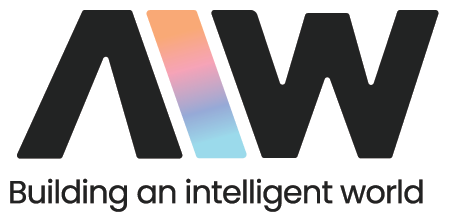Data labeling is an integral part of the workflow for preparing data, building reliable AI models, and training machine learning models to execute a specific set of tasks.
Data labeling is the term used to define the process of adding meaningful tags or labels to raw data elements and datasets in multiple formats including text, image, video, and more.
The labels represent and convey what class of objects the data element belongs to, helping machine learning models learn to identify specific classes of objects when analyzing unlabelled or untagged data.
The Emergence of Data Labeling & Data Annotation
To better understand use cases of data labeling and data annotation, let us first take a walk through supervised and unsupervised machine learning.
In supervised Machine learning, the labeled data provided by humans gives the ML algorithm what’s needed to get started. Using data labeling tools, humans give information about data elements that helps the ML models know more about the data elements encountered.
On the contrary, unsupervised Machine Learning involves the use of programs wherein the machines have to identify data points almost entirely on their own without human supervision.
The most significant drawback in unsupervised Machine Learning is that in this case the algorithms are working without direction and accuracy. The algorithms will definitely generate results, but for that more powerful algorithms and technical resources are required.
On the brighter side, supervised Machine Learning involves Data Labeling and Data Annotation, which directly reduce upfront costs of development and ensure a much higher level of accuracy.
Data Labeling and Data Annotation can increase the capabilities of any AI or ML program significantly, while also reducing your ownership costs and time to market.
Emerging technologies like Machine Learning and Artificial Intelligence are the future. No wonder, Data Labeling & Data Annotation is the future as well!
Data Types that must be Annotated
Text
AI and ML models are trained to read and interpret unstructured text that has not been created specifically for a computer to interpret. Social Media platforms use text annotation to help their AI and ML models interpret texts and suppress and delete messages that do not meet the guidelines or standards of respective social media platforms. Applications like Voice Assistants and Speech Recognition that use Natural Language Processing also use text annotation to convert audio into text. Even chatbots are trained with labeled or annotated textual data.
Images
Image labeling and annotation helps make image data or certain parts of the image data meaningful to a computer. Image annotation is useful for any ML models that are being trained to enable facial recognition, computer vision, robotic vision, and a lot more.
Audio
An audio file comes with multiple attributes and factors that need to be considered, such as, language, dialect, speaker demographics, intent, behavioral pattern, and more. Audio labeling and annotation helps AI models identify and segment audio data based on these parameters.
Applications with audio capabilities like speech-to-text conversion, automated transcription, voice response for customer service, and more.
Video
Video is the most complex form of media data managed and analyzed by ML models because a video is a compilation of multiple images that are in motion. Every image in a video is referred to as a ‘frame’ and video annotation helps add key points, bounding boxes, or polygons to annotate different objects in different frames. Video annotation is largely useful for autonomous vehicles/self-driving cars, security surveillance, and more.
Skill Set for Data Labelers
Data Labelers come with a wide set of responsibilities that require them to be proficient in completing the following tasks efficiently.
Bounding Boxes
Data Labelers use bounding boxes to accomplish image annotations that help in building object recognition models. A Data Labeler must be proficient in applying the bounding box annotation technique with maximum accuracy.
Polygons
Data Labelers must be able to use polygons which is a multi-point annotation technique that helps annotate specific objects in angled photos and polygons. Professionals should be able to assign annotations for the pixels in any given image and also label the same.
Key Points
A Data Labeling expert will be able to use key points to detect and identify small objects and variations in shapes by placing dots across an image to help detect and label facial expressions, facial features/attributes, emotions, body parts, and more.
Texts
Data Labeling professionals should be able to use metadata tags like keywords, phrases, sentences, and the like, to mark up attributes of any given dataset. It is the responsibility of a Data Labeler to make sure that the tags used are comprehensive and accurate so that there are no grammatical errors or lack of clarity.
Specializations for Data Labelers
A Data Labeler is responsible for creating quality labeled datasets for AI and ML models to comprehend data and generate desired results. Hence, it is important that Data Labeling professionals come with sufficient knowledge in specific fields of their choice.
Medical
For specialists in Medical Annotation, it is important that the annotator can prepare high quality datasets, identify class labels, and along with having expertise in medical image annotation, medical document/text annotation, video annotation, and audio annotation for maintaining medical records through audio records.
LIDAR
Lidar refers to light detection and ranging data that plays a crucial role in geospatial technology, autonomous technology, and more. Data annotators specializing in Lidar must have knowledge of Lidar annotation along with knowledge of how to combine image annotation with Lidar annotation to train computer vision and similar deep learning/machine learning models.
Geographic Models
Here, the data annotator receives data acquired by smart devices such as Satellite, GPS, Drones, etc. and annotates the data at hand to create geographical models. The annotator may have to annotate everything beginning from roads and water bodies, forests, to agricultural lands, deserts, and more.
Product Anomalies
Data annotators and labelers who specialize in detecting Product anomaly, must be familiar with using Anomaly detection models for benchmarking. Anomaly detection helps identify rare occurrences that may raise suspicion or concern due to showcasing a different pattern from the majority of data. Hence, Data Annotators must know how to load the data, curate a transform to detect spike anomaly, use the transform to detect spike anomalies, create transforms to detect change point anomaly, and also detect the change point anomalies with the transform created.
Conclusion
AIW comes with a robust team of Data Annotators and Data Labelers with specific specializations in their field of interest, enabling us to deliver best-in-class Data Annotation & Data Labeling services.



